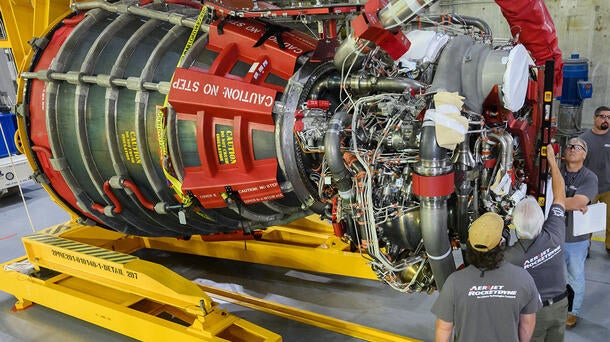Your Go-To Automobile Parts Shop for Engines for Africa and Much more
Your Go-To Automobile Parts Shop for Engines for Africa and Much more
Blog Article
The Quest for Ultimate Driving Power: Investigating the Pinnacle of Engine Efficiency and Technological Advancements in the Automotive Industry
In the realm of automotive design, the search of maximum driving power has actually been a relentless quest that has unfolded through the evolution of engine style and the combination of advanced technologies. From the meticulous workmanship of burning engines to the rapid advancements in electric propulsion systems, the automotive field stands at the cusp of a new age characterized by unprecedented efficiency capacities.
Advancement of Engine Layout

In addition, the assimilation of turbocharging and turbo charging modern technologies has reinvented engine style by increasing power without significantly enhancing engine size. These forced induction systems press the intake air, allowing for even more fuel to be combusted, therefore creating greater power outcome from a smaller sized engine. This development has been especially vital in improving the performance of smaller variation engines while preserving gas effectiveness criteria.

Performance-Enhancing Gas Technologies
The execution of sophisticated gas modern technologies has actually dramatically added to boosting engine performance in modern automobiles. Biofuels, acquired from sustainable resources like sugarcane, algae, or corn, deal boosted and decreased exhausts engine efficiency. Furthermore, gas additives and cleaning agents are being developed to tidy engine parts, optimize burning, and minimize friction, thereby increasing overall lorry efficiency.
Developments in Electric Propulsion
Substantial strides in electric propulsion modern technology have changed the automobile industry, leading the way for a new period of efficient and sustainable transportation. Electric vehicles (EVs) are getting appeal as a result of their ecological benefits and advancements in battery innovation, allowing longer driving arrays and much shorter charging times. Manufacturers are investing heavily in study and growth to improve the performance of electrical propulsion systems, focusing on increasing power output, improving power effectiveness, and minimizing total weight.
One significant breakthrough in electrical propulsion is the growth of sophisticated electric motors that provide higher torque and power thickness, leading to enhanced velocity and general driving efficiency. Additionally, regenerative stopping systems have actually been improved to catch and save energy throughout deceleration, further increasing the performance of EVs.
In addition, the assimilation of wise modern technologies, such as expert system and predictive analytics, is enhancing the administration of electric propulsion systems, making certain ideal efficiency under different driving problems. These improvements in electric propulsion are improving the vehicle landscape, driving the sector in the direction of a much more lasting and electrified future.
Effect of Computational Fluid Dynamics
With innovations in electrical propulsion pressing the boundaries of automotive innovation, the integration of Computational Liquid Dynamics is playing a pivotal duty in maximizing aerodynamic efficiency and boosting general effectiveness in car layout. Computational Liquid Dynamics (CFD) entails making use of computer system simulations to analyze the flow of air around a car, making it possible for engineers to forecast how design modifications will certainly impact aerodynamics without the need for pricey physical prototypes. By accurately modeling airflow patterns, CFD enables the refinement of lorry forms to lower drag, improve cooling, and improve stability.
CFD makes it possible for engineers to maximize air flow around elements such as radiators, engine bays, and wheel wells, contributing to enhanced efficiency and overall driving experience. In conclusion, the assimilation of Computational Liquid Dynamics represents a substantial action onward in the quest for supreme driving power and efficiency in the auto industry.
Future Fads in Engine Technology
In the dynamic landscape of vehicle engineering, cutting-edge innovations are shaping the future trajectory of engine development. The future of engine design is marked by a solid emphasis on performance, sustainability, and efficiency. Producers are significantly concentrating on developing engines that not just supply high power outcomes yet additionally focus on environmental duty by enhancing and lowering emissions fuel effectiveness.
One famous fad in engine advancement is the my latest blog post surge of electrification. Crossbreed and electric powertrains are gaining grip as practical alternatives to traditional burning engines. These modern technologies provide click here to read the capacity for substantial decreases in carbon discharges and increased energy effectiveness, straightening with global efforts to deal with climate change.
Furthermore, developments in materials scientific research and production strategies are allowing the production of lighter and extra long lasting engine elements. This change towards lightweight materials such as carbon fiber and light weight aluminum alloys adds to boosted efficiency and gas economic situation.
Verdict
To conclude, the quest of supreme driving power in the automobile field remains to drive innovations in engine layout, gas innovations, electric propulsion, and computational fluid characteristics. The advancement of these modern technologies is forming the future of engine development, leading the way for extra powerful and reliable lorries (engines for africa). As the industry continues to press the boundaries of what is possible, we can expect to see much more groundbreaking advancements in the mission for peak efficiency
One of the crucial turning points in engine design advancement is the change from typical carbureted engines to modern fuel-injected systems. By precisely metering the gas delivery to each cylinder, fuel-injected engines optimize combustion, resulting in far better performance and lowered ecological impact.
Additionally, the integration of turbocharging and supercharging innovations has revolutionized engine design by enhancing power without see post significantly raising engine dimension (engines for africa).The implementation of advanced gas innovations has substantially added to enhancing engine performance in modern-day vehicles. Furthermore, gas ingredients and detergents are being created to clean engine parts, enhance combustion, and decrease rubbing, thus enhancing total lorry performance
Report this page